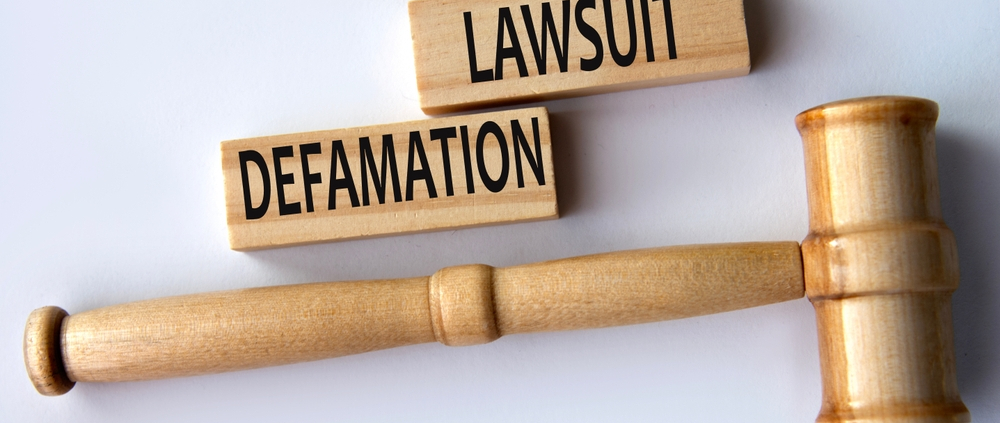How to Bring a Defamation Lawsuit in New York State Involving Social Media Content
By Brian Figeroux, Esq. | Editorial credit: Zhanna Hapanovich / shutterstock.com
In the era of social media, where anyone can quickly share their thoughts and opinions with a wide audience, defamatory statements are becoming more common. Defamation claims, particularly those arising from posts made on social media, are increasing as individuals use platforms like Facebook, Twitter, Instagram, and others to make potentially harmful assertions. In New York State, bringing a defamation lawsuit for content posted on social media can be complex due to the rapid dissemination of information and legal protections under Section 230 of the Communications Decency Act (CDA). However, individuals can still seek justice by suing the author of the defamatory post. Read more at www.askthelawyer.us. To read the complete analysis on our civil rights blog, click here.
This analysis will explore the legal framework for defamation in New York, how Section 230 applies to social media platforms, and the procedural steps involved in bringing a defamation lawsuit.
- What is Defamation?
Defamation is a false statement made by one individual about another, which harms the subject’s reputation. Under New York law, defamation can take two forms:
- Libel: Defamatory statements that are written or published, including on social media platforms.
- Slander: Defamatory statements that are spoken.
In the context of social media, defamatory content usually falls under libel because the statements are posted in a written format and can reach a broad audience quickly.
To succeed in a defamation lawsuit, the plaintiff must prove several key elements:
- False Statement of Fact: The statement must be an assertion of fact that is untrue. Opinions are generally not actionable unless they imply a false fact.
- Published to a Third Party: The statement must be shared with someone other than the person being defamed, which is easily satisfied with social media posts visible to other users.
- Fault: The plaintiff must show that the defendant acted negligently or, in the case of public figures, with actual malice (knowledge of falsity or reckless disregard for the truth).
- Harm or Damages: The plaintiff must demonstrate that the defamatory statement caused harm, such as damage to reputation, emotional distress, or financial losses.
- Section 230 of the Communications Decency Act (CDA)
Section 230 of the Communications Decency Act plays a significant role in social media defamation cases. It grants broad immunity to social media platforms like Facebook, Instagram, Twitter, and others, shielding them from liability for content posted by users. This means that platforms themselves are generally not liable for defamatory statements made by third parties, even if they allow the content to be shared.
What Section 230 Covers:
- Immunity for Platforms: Social media platforms are not responsible for the content posted by users. For example, if someone posts a defamatory statement on Facebook, Facebook cannot be sued for that content under Section 230.
- User Liability: Although platforms are protected, the individual who made the defamatory post can be held accountable. Section 230 does not protect users from lawsuits based on their own defamatory statements.
This legal protection is intended to encourage the free flow of information and allows platforms to moderate content without fear of being sued. However, individuals harmed by defamatory content must direct their lawsuits at the author of the defamatory post rather than the platform.
- Bringing a Defamation Lawsuit in New York
To bring a defamation lawsuit in New York, several steps must be followed, from consulting an attorney to filing a lawsuit in court. Here is an overview of the key steps involved:
Step 1: Consult with a Defamation Attorney
Before initiating legal action, it is crucial to consult with an attorney who specializes in defamation law. An experienced lawyer can assess the strength of the case, help determine if the content is actionable, and guide the plaintiff through the legal process. Social media defamation cases often involve intricate issues, such as obtaining evidence, identifying anonymous defendants, and proving damages.
Step 2: Identifying the Defendant
In some cases, the author of the defamatory content may post anonymously or under a pseudonym on social media. Identifying the defendant can be challenging, but it is possible to file a “John Doe” lawsuit initially and use legal tools such as subpoenas to compel social media platforms to disclose identifying information about the account holder. Once the defendant is identified, the lawsuit can proceed.
Step 3: Gather Evidence
Collecting evidence is a crucial part of any defamation case. Plaintiffs should preserve screenshots, archived posts, and any relevant communications that show the defamatory statement. Because social media posts can be deleted or altered, it is essential to act quickly to preserve this evidence. Third-party witnesses who saw the post can also provide testimony to support the case.
Step 4: Filing the Lawsuit
After gathering sufficient evidence, the plaintiff must file a complaint in a New York court. The complaint should detail the defamatory statement, explain how it was false, describe how it was communicated to others, and specify the damages that resulted from the defamation.
In New York, defamation claims are subject to a one-year statute of limitations, meaning that the lawsuit must be filed within one year from the date the defamatory statement was made public
.
Step 5: Proving Fault
In defamation cases involving private individuals, the plaintiff must prove that the defendant acted negligently in making the false statement. For public figures, a higher standard of actual malice applies. The plaintiff must show that the defendant either knew the statement was false or acted with reckless disregard for its truth
Step 6: Damages
The plaintiff must demonstrate that the defamatory statement caused harm. In New York, plaintiffs may seek different types of damages, including:
- Special Damages: Economic losses, such as lost income or business opportunities.
- General Damages: Compensation for non-economic harm, such as damage to reputation or emotional distress.
- Punitive Damages: If the defendant acted with malice or egregious misconduct, punitive damages may be awarded to punish the defendant and deter similar behavior in the future.
- Defenses in a Defamation Case
Defendants in defamation cases may raise several defenses, including:
- Truth: The best defense against defamation is that the statement in question was true. True statements are not defamatory.
- Opinion: Pure opinions are not actionable as defamation unless they imply a false fact. For instance, saying, “I think John is dishonest” may not be actionable, but stating, “John is a convicted criminal” if untrue, could be defamatory.
- Privilege: Certain statements made in specific contexts (such as in court or legislative proceedings) are privileged and immune from defamation claims.
- Consent: If the plaintiff consented to the publication of the statement, they may not later claim defamation.
- Challenges in Social Media Defamation Cases
Social media defamation cases present unique challenges:
- Anonymity: Some defendants post defamatory statements anonymously, making it difficult for the plaintiff to identify them without court intervention.
- Viral Nature of Posts: Social media allows for the rapid spread of defamatory content. A single post can be shared and viewed by thousands, amplifying the harm to the plaintiff’s reputation.
- Deletion of Evidence: Defendants may delete defamatory posts to avoid liability. Plaintiffs must act quickly to preserve evidence through screenshots or third-party archiving tools.
- Recent New York Cases Involving Social Media Defamation
In recent years, New York courts have seen several notable defamation cases related to social media. For example, courts have addressed instances where individuals were falsely accused of criminal behavior, infidelity, or professional misconduct in Facebook posts. In these cases, plaintiffs successfully pursued claims against the individuals who posted the defamatory content, resulting in both compensatory and punitive damages
.Conclusion
Defamation claims arising from social media content are increasingly common as platforms like Facebook and Twitter provide users with a wide-reaching forum for communication. In New York, individuals who are defamed on social media can bring lawsuits against the authors of defamatory posts, although the platforms themselves are generally protected by Section 230 of the CDA. To bring a successful defamation claim, plaintiffs must prove that the statements were false, harmful, and made with the appropriate level of fault. Despite the complexities of these cases, individuals who are harmed by defamatory content on social media have legal recourse and can recover damages for the harm done to their reputation and well-being.












Leave a Reply
Want to join the discussion?Feel free to contribute!